New Boston Historical Society
New Boston, New Hampshire
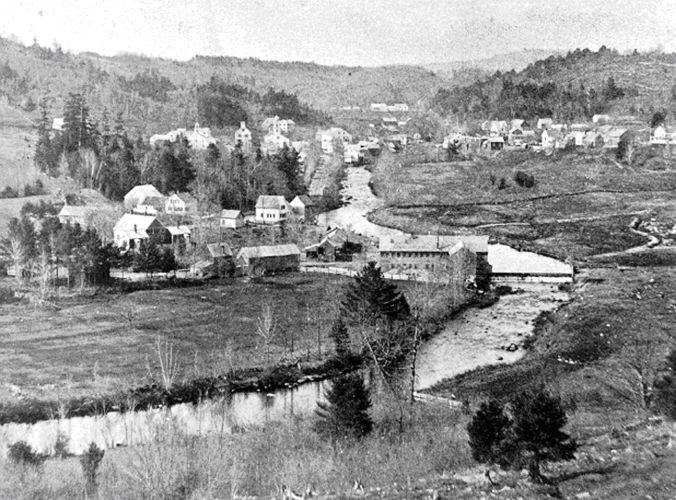
Looking up-river at New Boston village from Pinball Hill, you see the large McLane Door Factory and dam before it became Wilson’s Electric Plant.
Electricity comes to New Boston
Electric lights arrived in our town around the turn of the 20th century.
Kimball Wilson and his son Page installed a generator in a two-story factory built before the Civil War alongside the river just downstream of the Depot Street bridge.
There was a water-powered turbine in the factory that had been connected with leather belts to machines that made windows and doors; the Wilsons used this turbine to make electricity instead.
Later they added a gasoline engine to power the generator when the river was low.
I've read that Page Wilson used to turn off the generator when he went to bed — I suppose his customers must have gone to bed, too, whenever Page did.

This aerial view shows the location of the electric plant relative to the Central School and the ice house on Mill Street.
When 1st and 2nd graders visit our museum, we ask them to think about what life was like before electricity.
People used
candles and
kerosene lanterns instead of electric lights,
iceboxes instead of refrigerators, and
woodstoves instead of microwave ovens.
Don't even think about TV and video games!
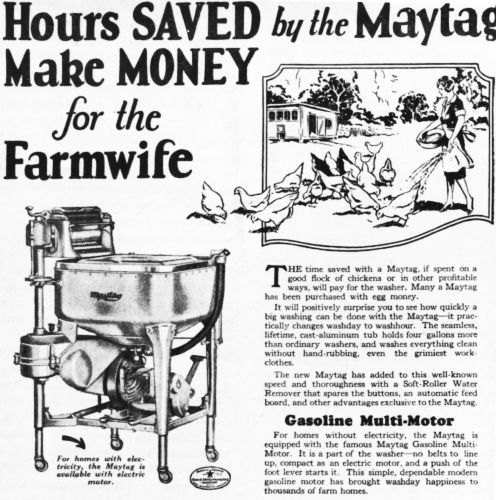
The Maytag Company made a wringer washing machine that could be powered by a gas engine if you didn't have electricity.
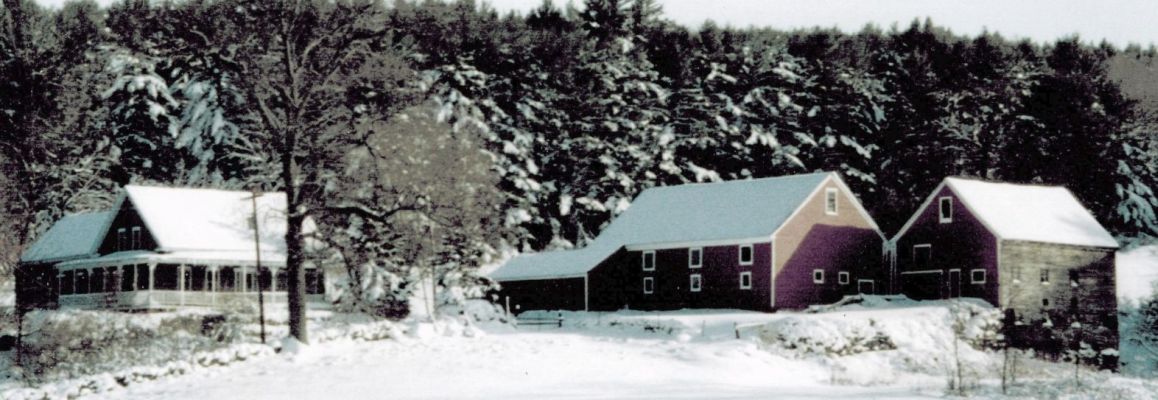
The Byam Farm on River Road.
Electricity did not appear everywhere in New Boston as soon as the Wilsons flipped a switch in 1894.
Bea Byam Peirce remembered moving to a house without electricity in 1941, the Byam Farm on River Road. Her father Donald Byam had to pay to have poles installed and electricity brought to his house and barn.
Bib Elliot said that iceboxes were in use everywhere until the 1940s, with blocks of ice delivered from Henry Friedrich's ice house near the Red Mill.
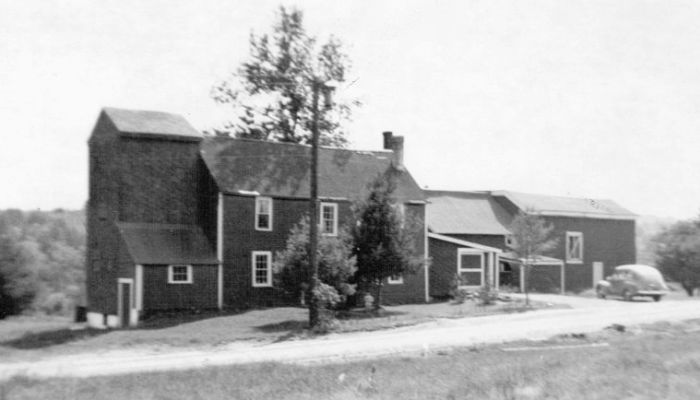
This 1950 photo shows the Grant farmhouse with the addition for a water tank but without the windmill.
Around that same time Ruth Grant Bynum and her parents moved to a house on Lyndeboro Road that's now the Birons'.
Without electricity there was no running water except that which dripped from a hand pump in the kitchen.
Ruth said her "very inventive" father Robert Grant installed a windmill on the roof to pump water up to a "huge" redwood tank he built in the attic so there'd be gravity-fed water in the house.
When electricity arrived Robert installed an electric pump, which is why you don't see a windmill on the Birons' roof today.
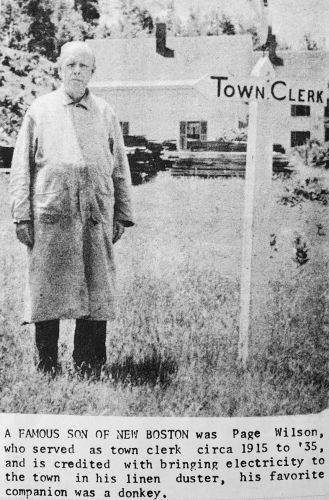
Page Wilson eventually sold his business to the Manchester Traction Light & Power Company and retired to his house on Mill Street.
He kept a donkey for a pet, and this animal's loud braying disrupted classes in the village school that once stood where the fire station is today.
-- Dan R. 2024






